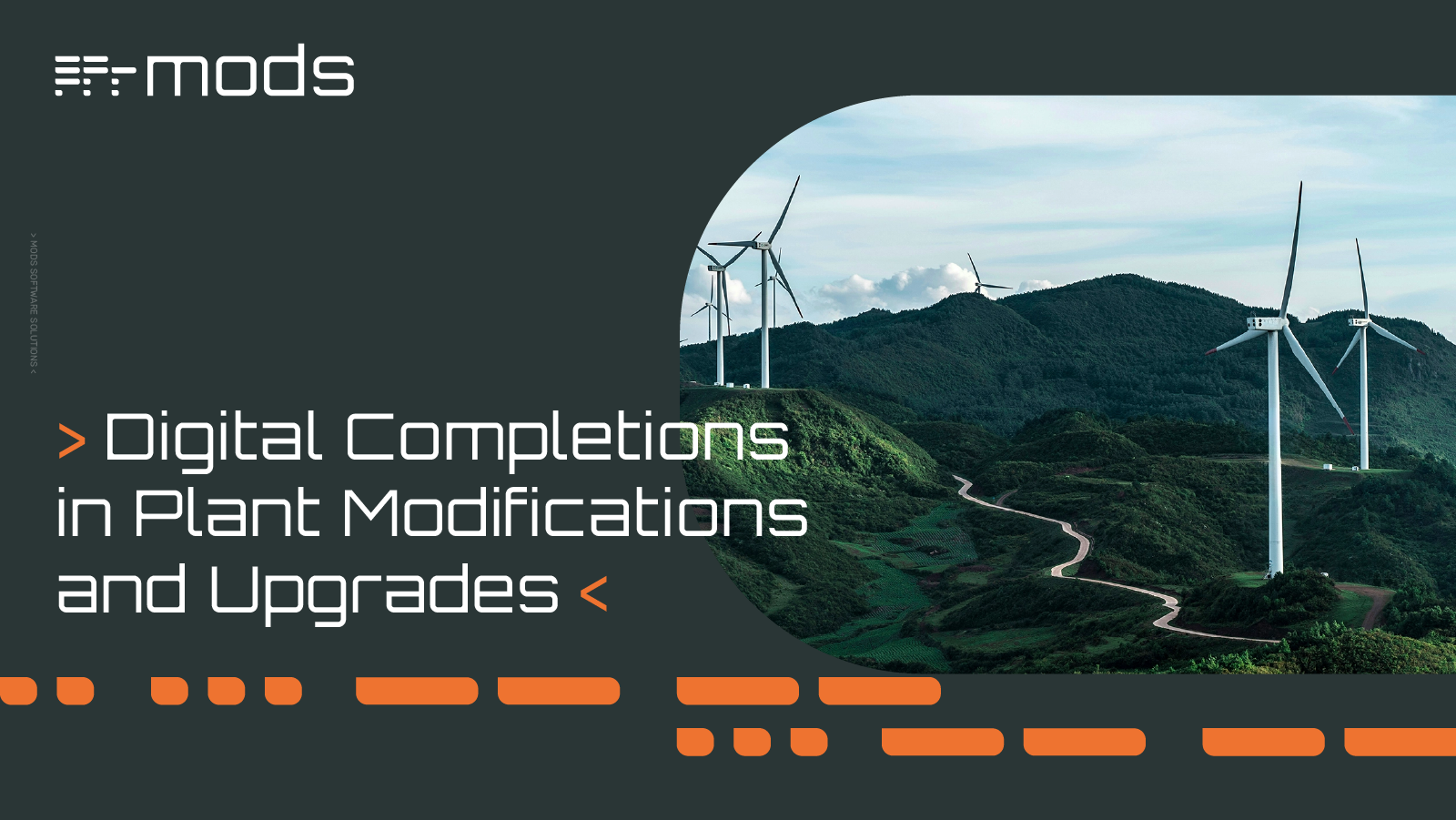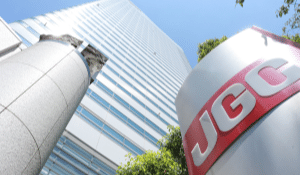Digital Completions in Plant Modifications and Upgrades
Unlike greenfield or any new build construction projects, plant modifications and upgrades present a unique set of challenges. Work is carried out...
7 min read
 Lisa De Vellis, PE
:
Jul 30, 2024 8:21:36 AM
Lisa De Vellis, PE
:
Jul 30, 2024 8:21:36 AM

The industrial sector emits over a quarter of global greenhouse gas emissions (GHG), with 9 percent coming from oil and gas (O&G) operations and 7 percent from mining operations. Asset performance management (APM) matters – streamlining workflows and supporting proactive operational decision-making – would go a long way to addressing this substantial GHG contribution from hard industry. But constructing, operating, maintaining and decommissioning industrial facilities such as those in O&G or mining involve diverse groups of stakeholders with competing interests, meaning that everyone speaks a different language.
Effective APM is difficult because industrial sector projects are complex, dynamic and demanding engineering processes that require enormous amounts of information exchange. Effectively, lots of people are trying to twist, tug and pull for accurate information required to advance their respective workflows. This is particularly difficult when a facility isn’t new and project work relies on grandfathered-in, hard-copy archives.
This bird’s nest of information hinders workflow optimization and on-the-ground project execution because it consumes greater-than-necessary resources. This results in lavish resource waste, searching for information as well as transporting materials, equipment and people to the right place, at the right time and in the correct sequence.

None of this does the industrial sector’s carbon footprint any good. Is there a silver bullet that can penetrate the chaos, untangling information, workflows and sequencing to reduce waste and, hence, environmental impact?
Despite relatively low levels of digital maturity, the industrial sector is catching on that digitalization is the way forward to optimize workflows and processes through improved information management, automation and more advanced technologies, saving time and money as well as reducing carbon footprints.
For every action, there is an equal and opposite reaction. Innovation can be conceptualized as the force that swings the pendulum from waste to reward. This holds true for all three sustainability spheres, from wasted time and money to maximum ROI, and from high carbon emissions to decarbonized materials and processes. Adoption of innovative tools in the form of digital technologies is the action resulting in these transformative reactions.
Embracing innovation through digitalization is the key enabler to transform sectors and projects that stomach all forms of waste (financial, time and pollution). Industrial Engineering, Procurement and Construction (EPC) group, JGC, strive to enhance planetary health.” To that end, JGC have aligned their EPC digital transformation vision with their commitment to the Sustainable Development Goals (SDGs) through the application of an innovation ecosystem designed to increase the sustainability of their heavy industry construction business.

So, having a sustainability-informed digital transformation strategy is key. Digitalization shortens and streamlines workflows, as well as value-and-supply chains. The three-pillar sustainability benefits of industrial digitalization are far-reaching, including:
Flaring, venting and leakage of natural gas is responsible for more than 60 percent of the industry’s direct GHG emissions. Effective digitalization reduces downtime, leaks and minimizes instability, which reduces intermittent flaring and venting. Optimizing operations through streamlined, digitalized workflows reflects 90 percent of “known technological solutions to decarbonization.”
Improved leak detection, achievable in part through joint integrity software solutions, and, more broadly, fugitive emission and flaring reduction, has the potential to cut global emissions by up to 1.5 billion metric tons of carbon-dioxide equivalent by 2050, with a miniscule cost of less than USD 15 per ton.
Further, the most significant contributor to construction-related GHG emissions is from embodied carbon, which considers the environmental impact from the entire value-and-supply chain of a given material from raw good extraction to fabrication, inclusive of all handling and transformation processes as well as eventual use and processes therein.

Shortening workflows (such as eliminating 1-2 week turnarounds for paper work packs to reach an offshore site), as well as shortening value-and-supply chains, eliminates unnecessary handling and transportation, positively impacting the project’s (and asset’s) carbon footprint.
Industrial digitalization greatly assists efficiency and visualization of activity management as well as that of simultaneous operations (SIMOPS). The grim reality is that field workers in the oil and gas sector, for example, face a significantly higher risk of death than in other settings, resulting largely from transport or contact related injuries owing to long hours, distraction, moving parts and a general dynamic and changeable environment.
Technologies offering asset visualization and remote inspections minimize physical exposure and equip workers with advanced knowledge of the onsite reality, prioritizing awareness and industrial health and safety.
It comes as no surprise that the elimination of waste (time and resource) saves money and increases ROI. The economic sustainability of industrial digitalization is the easiest case to make when attaching dollar signs to each of the following measured benefits of digitalization of existing offshore industrial assets that delivered a high volume of wide-ranging brownfield modifications on schedule and within budget:
Firstly, let us recall that true sustainability requires consideration of three pillars: environmental, social and economic. In the context of industrial projects and for clarity in the ensuing discussion, these metrics revolve around carbon footprint, occupational health and safety, and return on investment (ROI).
Regarding the use of digital tools in pursuit of industrial sustainability, the outputs are only as good as the inputs. Embarking on industrial digital transformation (DX) journey to maximize ROI, and to minimize safety risk and carbon footprint demands stellar inputs.
What we’re talking about is untangling that bird’s nest of information, laying each thread out, sorting and categorizing so that everything is able to be digitally captured, tagged, queried as well as used for automation, predictive metrics and modeling. This, data management, is the harbinger of data standardization.
Data standardization may seem like the most yawn-worthy topic ever. But it’s among the biggest global challenges to digitalization across a host of sectors, from healthcare to heavy industry. Why? Because it’s a messy, time-consuming, resource-sucking headache. Cracking this dam demands getting the most out of APM, which would enable the waters of digitalization to flow at scale, transforming economic, social and environmental profiles of global sectors. One significant way to optimize APM processes is through Enterprise Asset Management (EAM), which handles and standardizes data from a plethora of inputs as part of a holistic approach to a facility’s lifecycle management.

Industrial sectors and, hence, industrial sustainability, lags in digital maturity. Existing facilities such as brownfield O&G sites are beholden to a host of archival records in a variety of formats – paper reams, filing cabinets, Excel spreadsheets, plot plans and much more are practically screaming out to be converted into the most useful formats.
Even data that already exists in digital format, suffers from inconsistent units of measure, temporal variations, and many other issues that interfere with a software’s ability to make the most use out of it towards automation, predictive maintenance and other technological advancements.
Data standardization is the key to effective digitalization. A sophisticated EAM system would feed standardized data into APM software for optimal workflow management, including predictive maintenance and other automated processes that eliminate time and resource waste.
Industrial construction, operations, maintenance and decommissioning projects involve lots of stakeholders, each speaking a different language. Translating these different languages into a common one, and then feeding that common language into a centralized, cloud-based system, enables stakeholders to communicate as effectively as possible and enables workflows and supply chains to be as streamlined as possible.

In the construction, operation, maintenance and decommissioning of industrial facilities, CFIHOS is emerging as the de facto data standard. Driven by owners and operators who want to receive all information conforming to this standard at the conclusion of a project, when the asset and all related data is handed back over from the contractors and other parties. The ability for all project stakeholders to conform to the CFIHOS standard during their involvement in the project, and not only at the very end before handing over, stands to revolutionize the uptake, scalability and impact of digitalization in heavy industry.
The benefits of data standardization include:
Helping to lead the charge of the CFIHOS data standard, Mikitaka Hayashi, is both Chief Advisor to Digital Project Delivery & DX Department with JGC and Data Management Association Regional Coordinator for Asia with Data Management Association International.
Affectionately known as Mick, he has a lot to say on the importance of CFIHOS and data standardization more broadly: “Data standardization can only come from proper data management,” he says.
An EAM system does just that – it’s like a black box that governs data management. It hosts, standardizes and organizes monitoring information for a facility’s maintenance and operational activities, as well as that from any digital system used throughout an organization related to the facility in question, including financial systems, HR systems and more. When inputted into APM software, the capabilities of technologies like digital twins catapult into the future.
Successfully delivering construction or maintenance projects is but a series of decision-making processes reliant on facts. Obtaining these facts, however, is not always straightforward and relies on the ability to quickly access documents and corroborate their content with site information. This information gathering takes time and, more often than not, demonstrates that the documents are out of date and, unfortunately, obsolete.
“The idea,” says Mick, “is to transition from a document-led information management system to a data-centric one that saves time and money, as well as mitigating safety issues.”
Uptake of the CFIHOS data standard is increasing in steam and ought to be used anytime information is handed over to owner-operators of industrial infrastructure, such as O&G assets. It’s effectively a data dictionary that unifies the language used for equipment, components and locations and is a required step to evolve the industry from document-centric information management to data-centric.
As sustainability awareness and motivations increase across industrial sectors, so too does the drive to digitalize. A global data standard such as CFIHOS provides the data reference. But individual players cannot create a working data dictionary without proper data structure – this is where a robust EAM system comes in. As Mick rightly points out, “software providers need to understand the CFIHOS data structure and map/categorize the data inputs into their software because one cannot move to digitalization skipping data and proper data quality management.”
Data – and the language we use to identify, categorize, describe and communicate them – hold the key to the future of industrial sustainability. EPC groups like JGC are increasingly recognizing the value in their projects being CFIHOS compliant. Only in digital partnership with software providers, will this nut be successfully cracked. For industrial software to function optimally, inputs must be managed, structured and standardized to advance data management solutions and accelerate industrial digital transformation.

Software providers play a critical role in aligning people, processes and technology for improved uptake and scalability of digital solutions. Industrial SaaS provider and digital consultant, MODS, are helping to accelerate industrial sustainability. To learn how MODS are leveraging the human influence to drive digital advantage and to read about a suggested change management model for scalability and improved uptake of digital solutions, click here.
This article was first published on sustainability news site illuminem.

Unlike greenfield or any new build construction projects, plant modifications and upgrades present a unique set of challenges. Work is carried out...

Turnarounds and shutdowns are among the most critical—and stressful—phases in the management and operation of industrial assets. These planned...

Offshore decommissioning and asset retirement present significant logistical, regulatory, safety, fiscal and reputational challenges. The process of...

We all have them. Our children obsess over them. From video-calling to home-schooling to game-playing, the ubiquitous tablet has introduced an...

Digital work packages (DWPs) mitigate an obvious waste of time and resources in remote industrial construction projects, such as offshore maintenance...

MODS is already driving digital transformation in the energy sector with innovative industrial software applications that help Operators and EPC's...